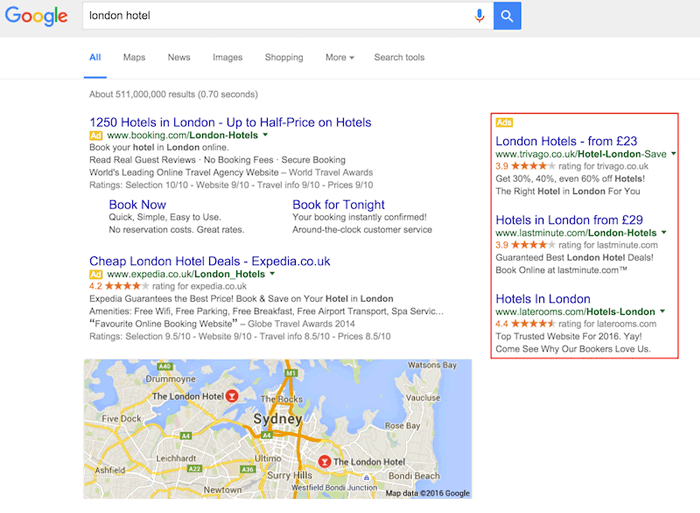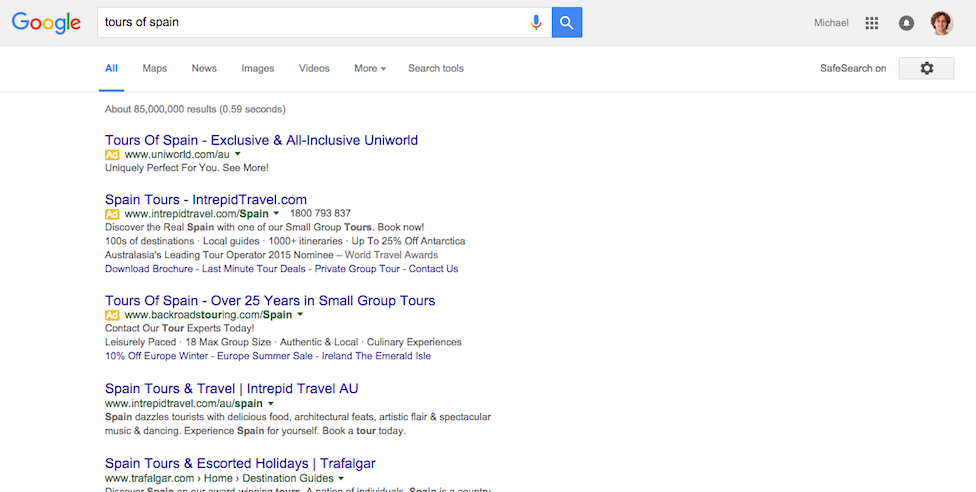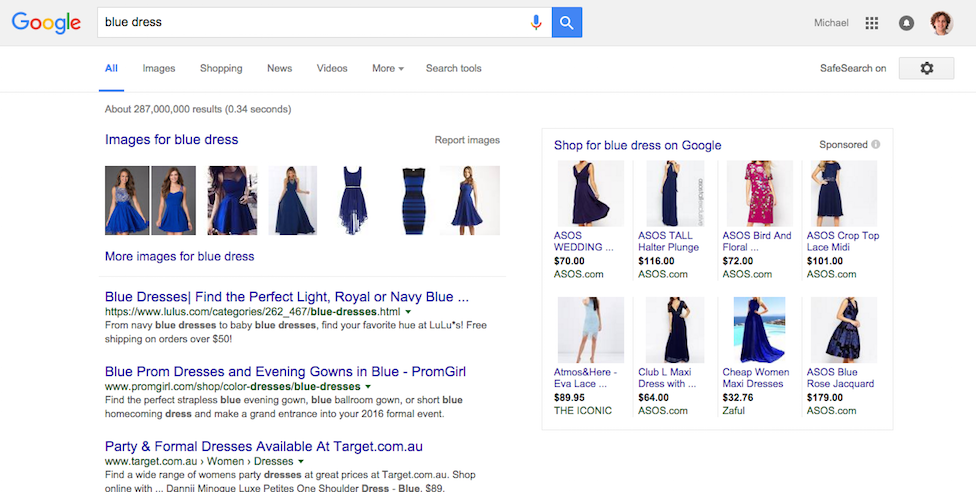Google Removes Right-Hand Side Ads
Loves Data
A Quick Rundown of What Happened
- No more right hand side ads
- Most accounts will be unaffected or positively affected
- New top ad position for some high traffic ecommerce terms
- New Google Shopping Ads and other boxes on the right side
- Lower tier players may not be able to compete
- Organic search is the big loser
This post will help you navigate the new currents in AdWords’ ocean and if you’d like to learn more about Google AdWords after your swim Loves Data has in person and online training courses!
What’s happening?
There’s been a lot of discussion on the web about Google’s recent but not entirely unexpected removal of right hand Google AdWords ads in search results. A lot of predictions of disaster have been made, equally, a number of major digital agencies and thought leaders have used their own data to claim that there’s no problem.
Google itself has stated that they’ve tested this extensively and found that the effect should be limited. All of these positions have extensive data sets backing them. So what’s the truth? Well, it’s a bit more complex. Let’s take a closer look at why there might be some cause for concern and how to mitigate it if you’ve ended up as one of the losers.
Firstly, for the uninitiated, here’s the change.
Before...

...And after

As you can see, that’s a lot of ad space lost.
But there are some neat shopping ads on the side.

Plus, Google has added a 4th ad spot to highly competitive keywords, although these haven’t been seen in Australia yet (at least not by us!)
Googlegeddon?
If your ads are performing well for your field, dominate a niche, or you aren’t bidding for high competition keywords, probably not. You’ve already got the key position needed. You’ll likely see a boost in click-through-rate (CTR) and a lowering of cost-per-click (CPC) as more of your ads get that prime real estate at the top of the page. (Wordstream) has some neat graphs showing that for their clients, positions 2 and 3 are now driving significantly more traffic, even more than the newly-prominent position 4.
If you’re involved in ecommerce and make use of Google’s Shopping ads, this is also good news. The increased space will allow you to compete where previously you would not have been shown. If you aren’t using Google Shopping Campaigns, now may be a good time to consider them –especially if you are in a high competition field.
Speaking of high competition, accounts with a limited budget or for weaker brands may begin to struggle. Our data has shown that for high competition keywords, above-the-fold CPCs have increased by 10-15%, even as CTRs have increased. This may cause some issues with budgeting, especially if you’re operating on narrow margins. It’s a good time to do an in-depth check of high-impression keywords to make sure that you’re still making ROI targets, and that you’re still getting the ad positions you want.
Brands that will really suffer from the change are those that have relied on holding positions four and five on high traffic terms, trading CTR for raw impressions and low CPC. These will find it harder to compete, and moving to the greener pastures of niche and long-tail terms may be your only option if you find yourself in this position. More than a few of our clients get a (small) positive ROI from keywords where they can’t get a top position, and we’re now having to retire these keywords and move the spend elsewhere.
What does it mean for SEO?
The implications for SEO are fairly dire. Pure organic results have been struggling for a few years now since Google Shopping and Places took away that valuable above-the-fold real estate. With an extra ad spot for ‘highly commercial’ terms and three ads now common you’re that much less likely to be seen before paid or local content.
You’re going to have to struggle that little bit harder to be seen by users, and you’re going to be seen without as much scrolling. If you’re an organic-Search-centric business, you might have to start looking at AdWords as a necessity. The problem is, if you’re not appearing above the fold it’s also likely you’re going to be entering a high competition, highly CPC arena. It’s just not a great place to be.
This may be a worrying change from Google’s historical mission to provide high-quality results, especially now that their algorithms are at the point where less savoury SEO techniques are all but impossible. Certainly, Google’s extensive testing to ensure that traffic isn’t lost on average and that good ads get sufficient ad space is reassuring, but it’s hard to completely trust their intentions when they stand to gain so much from this change.
It remains to be seen how businesses will respond to this but there are fears that there will be less of a focus on quality on-page content as AdWords becomes the dominant way for people to appear on Google.

Comments